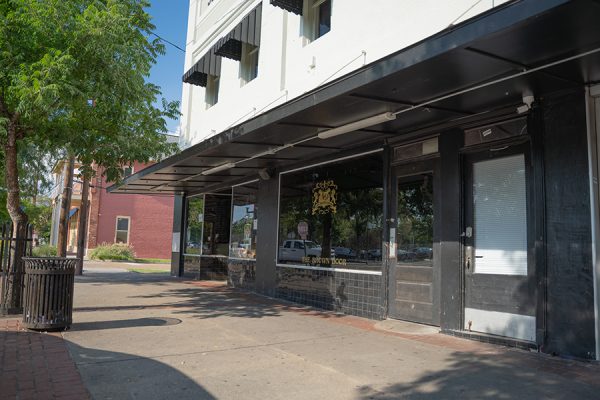How social distancing can reduce the spread of the coronavirus
AP Photo
Customers at a Trader Joes in Cambridge, Massachusetts practice social distancing as they wait in line. Maintaining a six feet distance can help flatten the curve and reduce the spread of the coronavirus.
Since the novel coronavirus has become a prominent aspect of our daily lives, the term “social distancing” has emerged to help prevent the spread of the disease.
Social distancing is the practice of maintaining a physical distance from a person to lower the risk of contracting an illness or a contagious disease. A person must be six feet apart from another to practice this correctly.
The practice goes back to the 1918 influenza pandemic, when Philadelphia threw a parade with over 200,000 attendees at the time. Three days later, 31 hospitals in the city were at max capacity, and over 4,500 people died.
After the city of St. Louis confirmed its first case of the flu, the city practiced social distancing by closing schools, theatres and places of large gatherings. The decision resulted in the reduced spread of the flu and showed how the practice of social distancing helps.
Social distancing is a method that can reduce the spread of COVID-19. Working from home, closing schools and cancelling large group events like festivals, sporting events and conferences are various methods of practicing social distancing.
Researchers of infectious diseases at The University of Texas at Austin found how quickly COVID-19 spreads. In one study, the researchers found that “the time between cases in a chain of transmission is less than a week and that more than 10% of patients are infected by somebody who has the virus but does not yet have symptoms.”
Ever since the closing of nonessential businesses, schools and universities, Gov. John Bel Edwards issued a statewide “Stay-at-Home” order. With places like grocery
stores open, it is important to apply social distancing when out and about.
When buying groceries,stand six feet apart from other customers while waiting in line to check out. When in a public area where there are more than five people, such as a library,leave a space in between seats.The practice of this must be done every day until the virus dies down to a pace where it can be controlled. It also should be done both at home and in public places.
Avoid social gatherings at home as much as possible, including having family and friends over. An alternative way to communicate with family and friends is to call or video chat with them.
The importance of social distancing is to “flatten the curve,” which means to slow down the community spread of the virus. According to the Centers for Disease Control and Prevention, community spread means “people have been infected with the virus in an area, including some who are not sure how or where they became infected,” and is spread easily in some affected areas.
Practicing social distancing when in public reduces the risk of getting infected. Follow
safety guidelines and tips from the CDC and stay posted on governmental updates.
Your donation will support The Lion's Roar student journalists at Southeastern Louisiana University.
In addition, your contribution will allow us to cover our annual website hosting costs.
No gift is too small.

Briyana Anderson is a communication major from Maringouin and began working at The Lion's Roar in the fall of 2019. She is a part of Pi Delta Epsilon and...






